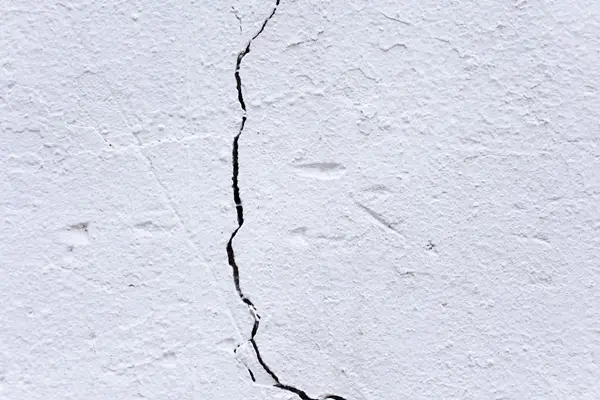Buying a new home is an exciting adventure but comes with responsibilities. Among these is understanding how to protect your home from unexpected issues. Sump pumps and flood insurance are crucial elements that can help safeguard your new property from water damage.
Knowing about these tools can save you from costly repairs and stress. This guide will help you understand these important protections to enjoy your new home with peace of mind.
Table of Contents
Understanding Flood Insurance: Why It Matters
Flood insurance is an important safeguard for new homeowners. Floods can occur anywhere, not just in a flood-prone area, and standard homeowner’s insurance often doesn’t cover flood damage. Understanding flood insurance can protect you from unexpected costs and keep your home safe.
Why Flood Insurance Is Important
Flooding is a risk that doesn’t solely depend on whether you live in a flood-prone area. Heavy rainfall, hurricanes, or even broken water mains can lead to flooding.
For instance, a severe storm could overwhelm local drainage systems, causing water to seep into your home. If this happens, traditional homeowner’s insurance policies usually don’t cover flood damage. Without flood insurance, you would be responsible for paying for repairs, which can be extraordinarily expensive.
Flood insurance provides a financial safety net, helping you avoid potentially devastating out-of-pocket costs.
Is Your New Home in a Flood-Prone Area?
First, if you’re relocating to a flood-prone area, you need to consider the local flood risks. Some states, like Florida for example, are particularly vulnerable to heavy rains and hurricanes, which can increase the likelihood of flooding. Understanding these risks can help you choose the right flood insurance coverage for your new home.
For those making a move to Florida, brokers like Eagle Moving Group Florida can assist in finding suitable moving services to ensure a smooth transition. Their expertise can help you manage the logistics of your move while you focus on protecting your new property.

What Flood Insurance Covers
Flood insurance offers coverage for various types of damage. It typically includes two main components: building property and personal property.
Building property coverage helps with the cost of repairs to your home’s structure, such as walls, floors, and the foundation. It also covers essential systems like plumbing and electrical wiring if floodwaters damage them.
On the other hand, personal property coverage helps replace items like furniture, electronics, and appliances that are damaged or destroyed.
It’s important to understand the specifics of what’s covered and any exclusions that may apply. For example, damage to your car or landscaping might not be included in standard flood insurance policies.
How to Get Flood Insurance
Obtaining flood insurance involves a few key steps. First, you can purchase coverage through the National Flood Insurance Program (NFIP) or from private insurance companies. The NFIP offers standardized policies and is often a good starting point.
Next, check your home’s flood zone designation on local flood maps. These maps assess your risk level based on historical data and geographic factors. Your flood risk will help determine your insurance needs and premium costs.
Lastly, review the coverage limits and exclusions of your policy carefully. Choose a plan that provides adequate protection for your home and belongings.

Sump Pumps: Your First Line of Defense
Sump pumps are essential for protecting your home from water damage. They manage excess water in basements or crawl spaces, especially during heavy rains or snowmelt. Knowing how they work and maintaining them properly can prevent costly flooding. To choose the best sump pump, consider its capacity, efficiency, and fit for your space.
What a Sump Pump Does
A sump pump’s primary job is removing water that collects in a sump pit, usually in your basement or crawl space. When water levels rise, the pump activates and moves the water out of the pit and outdoors, away from your home.
This process helps prevent water from seeping into your living areas, which can cause very expensive damage to your property. For example, a sump pump can prevent flooding that might damage your flooring, walls, or stored belongings.
Types of Sump Pumps
There are two main types of sump pumps: submersible and pedestal. Submersible pumps are installed inside the sump pit and can be fully submerged in water. They are generally quieter and more efficient, as they pump water directly from the bottom of the pit.
Pedestal pumps, on the other hand, the electric motor is installed above the sump pit, with a long shaft that extends into the water. While they are easier to service and repair, they can be noisier and less efficient in removing water from the pit. Choosing the right type depends on your specific needs and preferences.
Maintaining Your Sump Pump
Regular maintenance is key to ensuring your sump pump operates effectively. Start by testing the pump periodically, especially before heavy rain or storms. This can be done by pouring water into the sump pit and checking if the pump turns on and drains the water properly.
Additionally, keep the sump pit clean of dirt and toys the kids dropped in. Anything that can cause a clog can prevent the pump from working efficiently.
Also, inspect the discharge pipe to ensure it’s not obstructed and that water flows away from your home’s foundation.
Tips for New Homeowners: Flood Preparedness and Prevention
Preparing for potential flooding is crucial for new homeowners. Start by evaluating your flood risk through local flood zone maps and historical data for your area.
Next, take proactive steps to protect your home, such as elevating electrical appliances and utilities above potential flood levels. Installing flood barriers and sealing cracks in walls can also help prevent water from entering your home.
Finally, create an emergency plan with important contacts and an emergency kit containing essentials like food, water, and first-aid supplies. By being prepared and taking these precautions, you can reduce the impact of flooding and safeguard your home.

Common Questions and Answers
Understanding flood insurance and sump pumps can raise some common questions. For instance, you might wonder how much flood insurance coverage you need. This depends on your home’s value and flood risk, so consider both building and content coverage for complete protection.
Another frequent question is how to check if your sump pump is working properly. Regular testing is key—pour water into the sump pit to see if the pump activates and drains effectively. Also, ensure the pump is debris-free and the discharge pipe is clear.
Conclusion
In summary, understanding flood insurance and maintaining a reliable sump pump are essential for protecting your new home from water damage. Flood insurance provides crucial coverage against costly repairs that standard homeowner’s policies often don’t include.
Meanwhile, well-maintained sump pumps help manage excess water and prevent flooding in your basement or crawl space. By staying informed and taking proactive steps, you can safeguard your home and enjoy peace of mind. Remember, preparation is key to handling any potential water issues effectively.

Author at Best Sump Pumps
The first time I helped to install a drain tile and basement sump pump system was 1978.
Since then I have worked for a city water utility where I worked with and maintained pumps.
My rental properties and personal homes all needed sump pumps.
As a modular home dealer/builder, those new homes needed sump pumps.
I put that experience to good use by providing reliable, useful, and practical advice on buying, using, and maintaining sump pumps.
